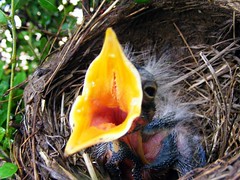Live tweeting at events is quite fun and has a lot of benefits. Most recently I tweeted during the classes I took at Orange County’s WordCamp (#wcoc), June 1, 2013.
Personally, I love it. I type fast, it’s a fun way to sort of force myself to pay attention, too.
Live tweeting a great way to pickup followers, promote an event, and engage with other attendees.
These tips are applicable whether it’s a live webcast, a class, a press event, or a class. Anytime there is a public speech, you can live tweet.
Why Tweet quotes?
Quotes grab us. It’s a great way to tweet out the same content without having the same tweet.
You can tweet from live radio interviews, tweet from archived videos, tweet from debates, etc.
How is this done?
It helps if you can type 60 wpm or more and have an actual keyboard. But you can do it on a mobile device, too.
Live tweeting at events, using the event hashtag, is a great way to meet new people. (That's why you're on Twitter, right?) #GuruTweet
— Bridget Willard (@BridgetMWillard) June 2, 2013
Use the power of hashtags.
Name the Hashtag:
If there is an official hashtag for the event use it. If you’re hosting the event, make the hashtag known. If there isn’t a hashtag, make one up; use your best judgement. Short and to the point is good.
For example, I was part of the Digital Influence panel in April. There was no hashtag. We went with #DigitalInfluence.
If there is a class within a conference, use the an appropriate hashtag. For example for the class “WordPress 101” I used #WP101.
Form:
Use quotation marks. Use proper grammar. Use the speaker’s Twitter handle. Use the hashtag.
If you feel uneasy about tweeting straightaway, type the quote into a text file for later.
I like to open a text file and put the speaker’s twitter handle and hashtag (eg. @WebTW #WP101 #WCOC) there for cut/paste. I simply copy it. After I type the quote, I paste. It helps if you know the keyboard shortcuts, too (CTRL+C / CTRL+V). This makes it quite fast and efficient to live tweet.
Disclaimer: If you type (or find) the wrong handle, for example, like I did (twice this weekend), all of your tweets will be wrong with the cut and paste method. And all of your retweets will be wrong. Proofread. I could kick myself for getting a bunch of them wrong.Examples from WordCamp (#WCOC):
"A plugin may have a widget but it may not." @webtw #NotSynonymns #WP101 #WCOC
— Bridget Willard (@BridgetMWillard) June 1, 2013
"Slander is verbal defamation, liable is written." @celebritylaw #LegallyBlogging #WCOC
— Bridget Willard (@BridgetMWillard) June 1, 2013
"It's not that you can't do everything, it's just that you shouldn't." @SyedBalkhi #TimeMgmt #WCOC
— Bridget Willard (@BridgetMWillard) June 1, 2013
You can even use the hashtag for other event-related tweets such as a photo of yourself and a new friend, etc.
I finally got to shake @RossTeasley 's hand at #wcoc. #winning pic.twitter.com/TptcqNpNF5
— Bridget Willard (@BridgetMWillard) June 1, 2013
Follow the Hashtag:
My favorite tool for this is TweetChat.com. With Twitter’s API changes, you never know how long services like this will be available. If all else fails, setup a column in Hootsuite or Tweetdeck to see the other tweets.
If you don’t have time to respond to others’ tweets, favorite them to respond later. Remember, one of the goals is to meet new people and form new bonds. Follow people back and maybe even put them on a list.
Respond to Others:
Find other people tweeting and retweet them. I recommend old-school retweets, but if you’ve been reading this blog, you know that.
Thank people who retweet you. Reply to others.
Twitter only allows you to tweet 1,000 times a day which works out to 40 times an hour. Thanking and retweeting will take up some of your tweets, so be cautious.

